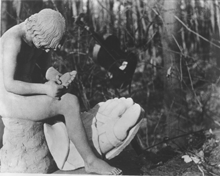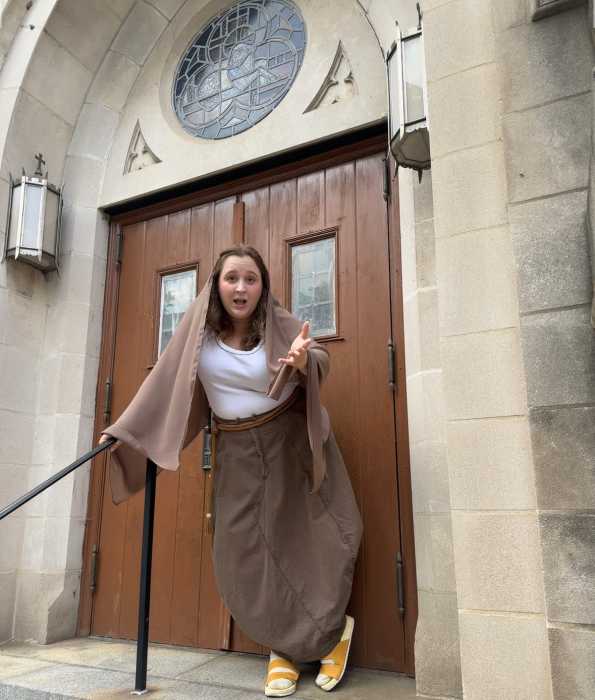American cinema’s lost experimental heritage reclaimed in weekend tribute
The digital revolution in contemporary film has so transformed our perceptions of cinematic experience that it’s necessary to pause sometimes and readjust our vision. The pioneering works in the series “Unseen Cinema: Early American Avant-Garde Film 1894-1941,” screening October 15 and 16 at the Museum of the Moving Image in Astoria, bathe our jaundiced eyes with healing, luminous nitrate, straight from the historic wellsprings of cinematic invention.
The “Unseen Cinema” weekend is one leg of a nationwide tour, itself the culmination of an ambitious, multi-year initiative to preserve, restore, and exhibit a comprehensive body of pre-World War II filmic experiments. This groundbreaking project marshaled the collaboration of the world’s leading motion picture archives under the curatorial direction of historians Bruce Posner and David Shepard, working in coordination with New York’s own inestimable Anthology Film Archives.
The weekend is comprised of four installments, including a panel with “Unseen Cinema” curators Posner and Shepard, and Howard Besser of NYU’s motion-picture preservation program. There’s really nothing to choose between the programs, as each is stocked with myriad amazements; dedicated cinephiles will simply hunker down for the duration.
The opening program unspools a gallery of shorts from Edison Studios and the American Mutoscope and Bioscope Company made between 1891 and 1903. Alongside these are a selection of individual works including Lois Weber’s “Suspense” (1913), Elizabeth Woodman Wright’s “Windy Ledge Farm” (ca. 1929-34), and the magnificent “H2O” (1929) by Ralph Steiner, a pivotal figure involved in founding three Popular Front–era film collectives—the Film and Photo League, Nykino, and Frontier Films—that sustained the radical impetus in American documentary production.
Surpassing them all for sheer spectacle is Busby Berkeley, represented by the musical number “By a Waterfall,” from the Warner Brothers feature “Footlight Parade” (1933). This 10-minute sequence stars Ruby Keeler and Dick Powell as a perfectly groomed, impeccably attired young WASP couple, serenading one another while languidly disporting in a back lot fantasy glen, surrounded by such heavily Freudian décor as thick pubic tufts of foliage and the titular waterfall dribbling from a jutting earthen spigot.
Powell’s honey-voiced swain lays his shiny head to rest in the lap of Keeler’s winsome flapper, and the ensuing number, thus motivated as a dream, builds into a jaw-dropping choreography for camera. The suggestive dribbling brook morphs into a torrential cascade down a quarried rock face, every niche and outcropping draped with a bevy of trilling damsels. This Edenic tableau then explodes into a gargantuan synchronized aquatic ballet, filmed from underwater and overhead, executed by scores of maillot-suited ingénues in shifting geometric formations rendered as undulating serpentine abstractions by Berkeley’s audacious cinematography.
Although tangential to the film’s purpose here, it is moving to consider who these anonymous, uniformly smiling young women were—what were their names, birthplaces, backgrounds? When they arrived in Los Angeles from small town and farm, as so many must have, it’s unlikely that any could have expected to find themselves employed quite like this. Their unfeigned, giddy, slightly dumfounded pleasure, shining tangibly through their endlessly rehearsed maneuvers, is what makes the sequence not only astonishing but also surprisingly affecting.
Even nonspecialists will want to catch the October 15 panel on preservation, in order to see such marvels as “Annabelle Dances and Dances” (1894-97), a boldly tinted Edison Studios motion study of a danseuse performing in place for the camera, swirling her skirts to become a lepidopterous dervish. Also presented at the panel is Fernand Léger and Dudley Murphy’s canonical “Ballet mécanique” (1924), an exuberant whirligig of kaleidoscopic visuals. The film’s profusion of devices expanded the basic grammar of avant-garde cinema, and its influence continues to our own day, with its upside-down, slow motion shot of a blonde on a swing lovingly reproduced in Terrence Malick’s “The Thin Red Line.”
Program Three on October 16, “Picturing a Metropolis: NYC Unveiled,” helps weary Gothamites fall in love again with our incomparable city. This panorama of mostly documentary shorts includes Robert Flaherty’s “Twenty-Four Dollar Island” (ca. 1925-27), Jay Leyda and Leo Hurwitz’s “A Bronx Morning” (1931), and Rudy Burckhardt’s “The Pursuit of Happiness” (1940). “Manhattan Medley” (1931), made by the Fox Movietone News stringer Bonney Powell in his spare time, includes a brief, startling glimpse of an NYPD riot, with mounted officers charging into a thronged labor demonstration—plus ça change. The program’s gaudy tailfeather is the “Lullaby of Broadway” sequence from Busby Berkeley’s “Gold Diggers of 1935.”
Good to the last program, “Unseen Cinema” closes with “Light Rhythms,” prominently featuring works by Slavko Vorkapich and Oskar Fischinger, two of the many émigré artists in the series whose contributions immeasurably enriched American film culture. The visionary German animator Fischinger—tarred as “degenerate” by the Nazis and brought by Paramount to Hollywood, where he went on to animate the faerie wand’s sparkle in Disney’s “Pinocchio”—is represented with “Radio Dynamics” (1936) and “An American March” (1941). The show’s discreetly embedded Easter egg is “So This Is Paris” (1926) by that glittering exile Ernst Lubitsch.
The collected films preserved through the “Unseen Cinema” initiative become available this month, just ahead of the holiday season, on a massive DVD box set presented by Anthology Film Archives via the Image Entertainment label. Compiling an almost unfeasible 19 hours of 155 individual films mastered from newly preserved and restored prints onto seven themed discs, “Unseen Cinema” is an achingly covetable cinephile fetish, and easily the DVD box to beat for 2005.
“Unseen Cinema,” including “ Spook Sport” (1939-40, Mary Ellen Bute and Norman McLaren) and “Object Lesson” (1941, Christopher Young), is the culmination of an ambitious initiative to preserve, restore, and exhibit a comprehensive body of pre-World War II filmic experiments.
gaycitynews.com

































